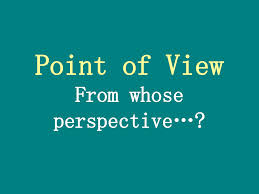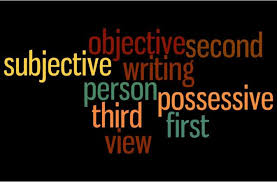Today I want to discuss the point-of-views that writers use. The most common types of P.O.V.’s are first person and third person. There are a lot of perks and quirks and disadvantages to writing/reading in first or third person.
Point-of-view is HUGE when it comes to reading and/or writing a book. It determines a lot when it comes down to the very core of point of view. Once you start with one point of view, it’s hard to switch to the other in the middle of the book. You might find that you enjoy writing in first-person more than third-person, but you already have half a book done. So, it’s very important to figure out which P.O.V. you prefer.
Figure out which point-of-view you prefer before you start writing. Though it’s never too late to switch to first-person or third-person when drafting and revising, it will be too late if you send it off to be published and you discover how much you really wanted it to be a different point-of-view.

First person has come to be really popular the past decade, with books such as If I Stay, The Fault in Our Stars, and Twilight being some of the most popular ones. First person uses terms such as: “I went to the store,” and “I fell asleep.”
Notice how they use I such as when you speak to someone about something you did.
First person lets the reader experience more feelings and more background to the character(s) at hand. You are able to delve into the character’s head and experience everything they experience through their eyes. You understand what they feel, what they see, what they smell (sometimes,) and that’s first person.
You don’t say, “John sang at the karaoke bar.” (That would just be weird to speak in third-person in reality.) Because, you really say, “I sang at the karaoke bar.” It’s just like talking about yourself, in a way.
The only thing is, when you read first-person, you’re stuck with that person. You’re stuck in the character’s head, and there’s no way out.
You also get a limited view in first-person.

On the other hand, third person is like being an outside-viewer, almost like observing from afar. You see some things you naturally wouldn’t see in first person. Books such as The Maze Runner, The Last Song, and Eleanor and Park are a few examples of third-person.
Third person gives you an outer-perspective. One where you experience things the main characters might not. You also might find out some secrets of things that the character won’t know until later.
You are also not stuck in one person’s head. You get to see all the characters’, and what they are doing and/or feeling. It is as if you are in the clouds, looking down upon the characters’. You see and experience everything in this whole new perspective.
I have always found that I like first-person better, but I have recently started branching out to third-person. It might be a good idea to try one out yourself. Even if you despise third-person, you should try and read a book in third-person. Perhaps it was just the writing, or the characters, but some third-person books can be as amazing as, or even better than first-person.
The same goes for writers and readers who do not enjoy first-person. Some readers and writers get annoyed at how “He said” is replaced with “I said.”
It’s not an easy job writing, and it only makes it harder if you do not enjoy the perspective you are writing in. It is up to you on whether or not you prefer to write first-person or third-person. It is what makes you feel better and more comfortable when writing.
As a writer, it’s important to find what brings you comfort and relaxation when writing. Find what you are comfortable with, and stick with it, because some writers cannot stand writing in first-person. Others cannot stand writing in third-person.
Find which one you like the most, but also, do not forget to try other perspectives. You might find how much you enjoy first-person or third-person better than the other.
I have also written a post on second-person.


